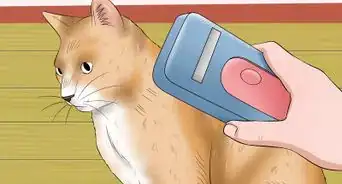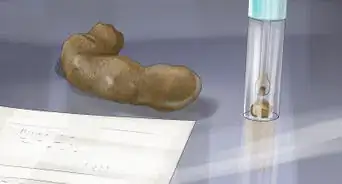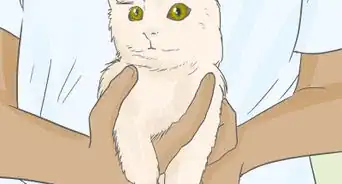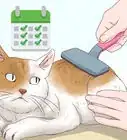This article was co-authored by Natalie Punt, DVM. Dr. Natalie Punt is a Veterinarian and the Founder and CEO of mPet- a smart phone app for pet owners to store, manage and transfer their pets medical records and health information. She specializes in small animal emergency and general medicine and veterinary practice economics. Dr. Punt holds a BS in Biochemistry and Molecular Biology from The University of California, Davis, an MS in Biochemistry from The University at Buffalo, and a DVM from Western University of Health Sciences.
There are 11 references cited in this article, which can be found at the bottom of the page.
This article has been viewed 34,829 times.
So, your cat is in labor! Home births are common and typically go off without a hitch, but how can you tell when your cat is finished delivering her newborns? Cat litters can vary anywhere from 4 to 12 kittens, so it's important to know how many you're waiting for. Here are the signs your cat is still expecting more kittens.
Steps
Community Q&A
-
QuestionMy cat delivered only one kitten 3 days ago, is there any chance that she'll deliver more kittens?
 Bacon_hair8535 NoobTop AnswererKittens should come down the birth canal 15 minutes to two hours apart. When the amniotic sac surrounding the kitten ruptures, birth of a kitten should take place within 30 minutes. There is cause for alarm if more than three hours pass between kittens.
Bacon_hair8535 NoobTop AnswererKittens should come down the birth canal 15 minutes to two hours apart. When the amniotic sac surrounding the kitten ruptures, birth of a kitten should take place within 30 minutes. There is cause for alarm if more than three hours pass between kittens. -
QuestionMy cat delivered 5 kittens and she has 1 more inside so why has she stopped labor?
 Bacon_hair8535 NoobTop AnswererSo-called interrupted labour is common enough in cats to be considered a normal occurrence. In this case, when one or more kittens have been born, the mother will cease straining and rest quite happily, suckling those kittens already born.
Bacon_hair8535 NoobTop AnswererSo-called interrupted labour is common enough in cats to be considered a normal occurrence. In this case, when one or more kittens have been born, the mother will cease straining and rest quite happily, suckling those kittens already born. -
QuestionCan a cat have a second litter of kittens after the first are born?
 Bacon_hair8535 NoobTop AnswererYour cat's next heat may occur just a few weeks after her kittens are born. To prevent another pregnancy, ensure your kitty isn't around any male cats, and talk to your vet about spaying your cat.
Bacon_hair8535 NoobTop AnswererYour cat's next heat may occur just a few weeks after her kittens are born. To prevent another pregnancy, ensure your kitty isn't around any male cats, and talk to your vet about spaying your cat.
References
- ↑ https://www.cats.org.uk/help-and-advice/pregnancy-and-kitten-care/birth-and-kittening
- ↑ https://thecatsite.com/c/how-do-i-know-when-my-cat-will-give-birth/
- ↑ https://www.pdsa.org.uk/pet-help-and-advice/pet-health-hub/other-veterinary-advice/cat-labour-a-guide-to-your-cat-giving-birth#contents-link-2
- ↑ https://vcahospitals.com/know-your-pet/breeding-and-queening-cats
- ↑ https://icatcare.org/advice/cat-birth/
- ↑ https://www.pdsa.org.uk/pet-help-and-advice/pet-health-hub/other-veterinary-advice/cat-labour-a-guide-to-your-cat-giving-birth#contents-link-2
- ↑ https://www.petmd.com/cat/conditions/reproductive/c_ct_retained_placenta_afterbirth
- ↑ https://www.austintexas.gov/sites/default/files/files/Animal_Services/Foster_Care_Manual/NURSING_MOTHER_CATS_AND_KITTENS.pdf
- ↑ https://icatcare.org/advice/cat-birth/
- ↑ https://www.pdsa.org.uk/pet-help-and-advice/pet-health-hub/other-veterinary-advice/cat-labour-a-guide-to-your-cat-giving-birth#contents-link-2
- ↑ https://www.pethealthnetwork.com/cat-health/cat-diseases-conditions-a-z/what-expect-when-your-cat-labor
- ↑ https://www.medicanimal.com/Understanding-common-problems-during-feline-pregnancy-queening-and-lactation/a/ART111481
- ↑ https://vcahospitals.com/know-your-pet/breeding-and-queening-cats
- ↑ https://www.petplace.com/article/cats/pet-health/care-of-the-new-mother-cat/
- ↑ https://www.cats.org.uk/help-and-advice/pregnancy-and-kitten-care/birth-and-kittening
- ↑ https://catcare.com/blog/queening-and-kittens/

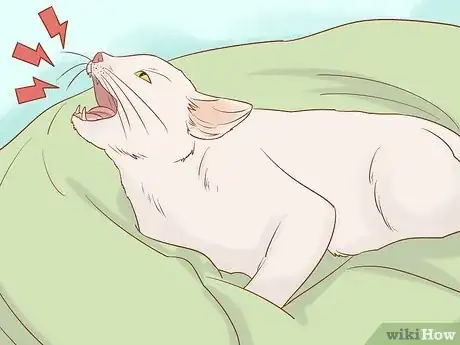




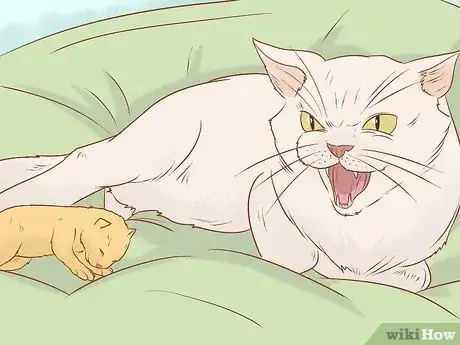


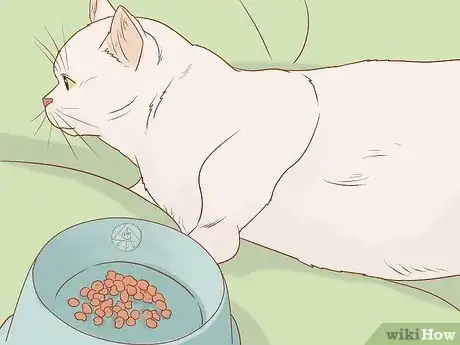


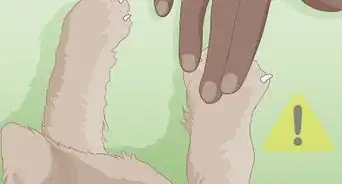


-Step-11-Version-6.webp)



